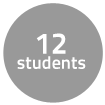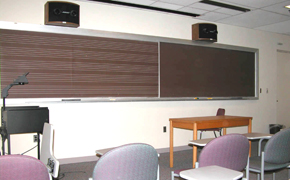This Course at MIT pages are part of the OCW Educator initiative, which seeks to enhance the value of OCW for educators.
Course Overview
This page focuses on the course 21M.355 Musical Improvisation as it was taught by Dr. Mark Harvey in Spring 2013.
This course exposes students from diverse musical backgrounds to the aesthetics and practice of improvisation. It is not specifically a jazz improvisation course, although jazz figures prominently in the subject, along with other traditions and approaches. The course mixes lecture-discussion, guest lectures and workshops, and hands-on music making. Enrollment is contingent on brief auditions held during the first class.
The Spring 2013 version featured a special concert series with four prominent guest artists.
Course Outcomes
Course Goals for Students
- Open up students’ ears and imaginations to a range of approaches to improvisation.
- Enable students to become better musicians, building skills in performance and improvisational methods.
- Develop a deeper awareness of how music works, in terms of structure, emotion, and aesthetic perceptions.
Possibilities for Further Study/Careers
Some students take more music courses in theory, history, ensembles, etc. Others simply continue to play/improvise on their own. Two students have formed an Improv Club.
Ensuring that students from a wide variety of backgrounds could work together is…a continuous developmental process, an improvisation of its own.
—Dr. Mark Harvey
Below, Dr. Mark Harvey describes various aspects of how he teaches 21M.355 Musical Improvisation.
Designing the Class
I started with extensive planning on the overall order of various topics, concepts, and concerts. Further preparations took different forms for different units – sometimes reading and research, sometimes polishing my own chops on specific improvisation approaches.
Working with Guest Artist/Lecturers
The guest artist/lecturers were major collaborative teachers, presenting their approaches in class at a high level, and then demonstrating in performance what had been discussed in class. They also expanded my insights into various approaches that I may have known something about, but not had the opportunity to examine in depth.
Teaching as Improvisation
Ensuring that students from a wide variety of backgrounds could work together is one of the central challenges in teaching this class. It’s a continuous developmental process, an improvisation of its own.
Refining the Class with a Mid-term Evaluation
At the midterm point, we held a class round-robin evaluation, to maximize shared insights and sort out any difficulties. That was followed at finals time with individual write-ups of what they liked, what worked well, and suggestions for improvement next time the course is offered.
Curriculum Information
Prerequisites
- Intermediate level of performance skill on an instrument, including voice.
- Prior experience as an improviser is not necessary, although it is useful.
Requirements Satisfied
HASS-A ![]()
Offered
Every spring semester

Enrollment
Enrollment in Spring 2013 was 12 students. It typically ranges from 10-15.
Breakdown by Year
40% seniors, 40% juniors, 20% sophomores
Typical Student Background
Intermediate musical-technical skills are required, as demonstrated in a brief audition at the start of the term. Students should be enthusiastic and have an open mind for the subject.
Enrollment Cap
About 15 students
Ideal Class Size
Twelve students is ideal. That’s large enough to reflect diverse musical backgrounds and opinions, yet small enough to get to know individuals and the small group teams well.
During an average week, students were expected to spend 10 hours on the course, roughly divided as follows:
Lecture and Guest Artist Sessions
- 2 sessions per week, 1.5 hours per session; 26 sessions total
16 sessions taught by Mark Harvey
- Discussion and demonstration of key concepts
- Student performances of design assignments and projects, with class discussion and critique about how things worked, what could be improved, etc.
8 sessions with guest artists (2 per guest artist)
- 1st session: introduce and demonstrate their approach; give students an assignment
- 2nd session: “master class” format with critiqued student demonstrations
Labs
- 1 session per week, 1 hour per session; 13 sessions total
- Taught by Tom Hall
- Required attendance
Goals
- Increase improvisational proficiency and general musicianship
- Complement other private study and ensemble experiences
Out of Class
- Complete assigned readings and listening.
- Attend 6 required concerts and write short reflection papers on each concert.
- Prepare design assignments, leading to short demonstrations in class. Students were challenged to think through a particular approach and devise a framework with which the improvisation will occur.
- Prepare the final project. Students were challenged to demonstrate their integrated understanding and skills based in one or more of the approaches covered in class, and with a more substantial duration than the individual design assignments.


 Room 1 of 1
Room 1 of 1 